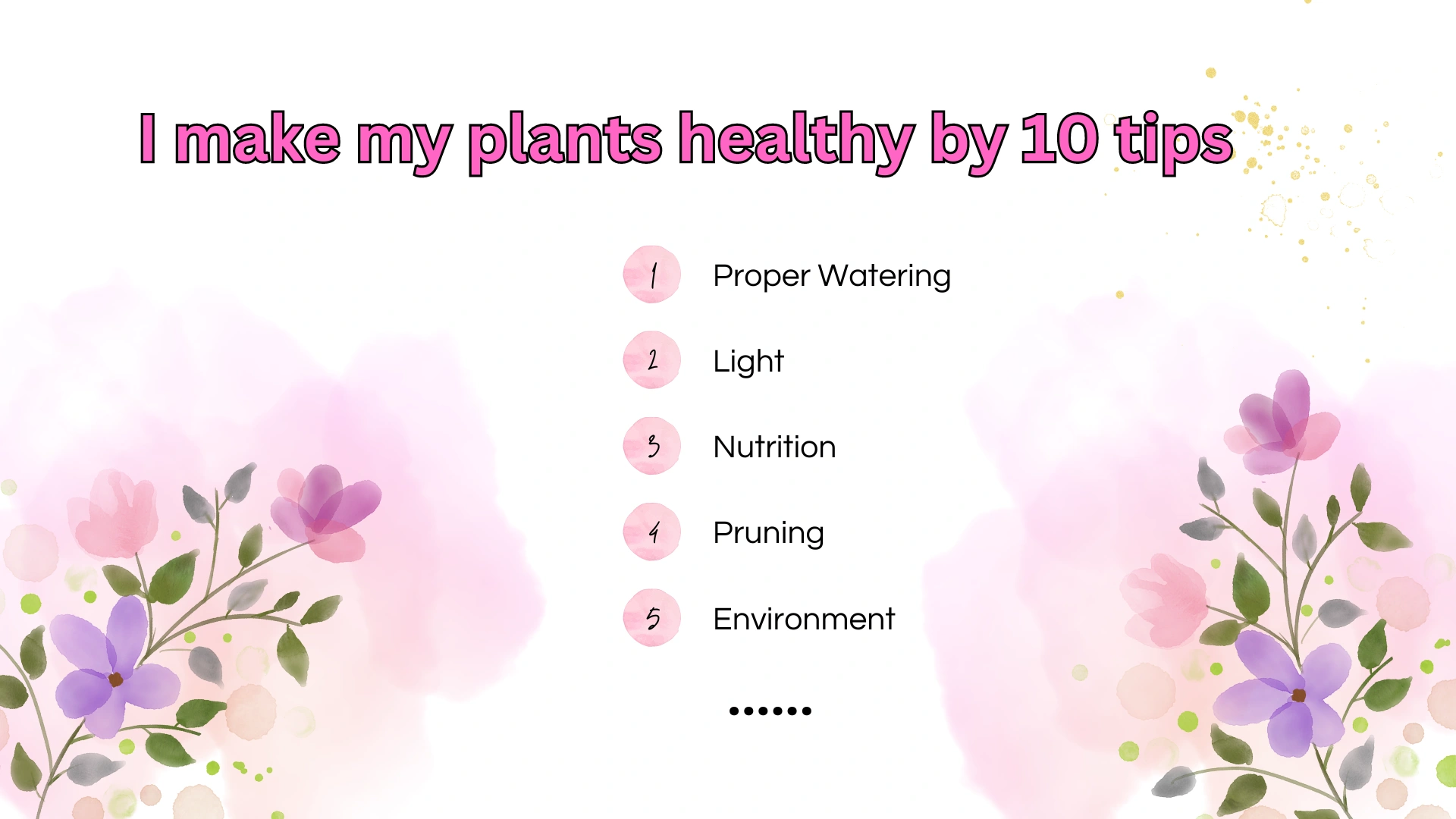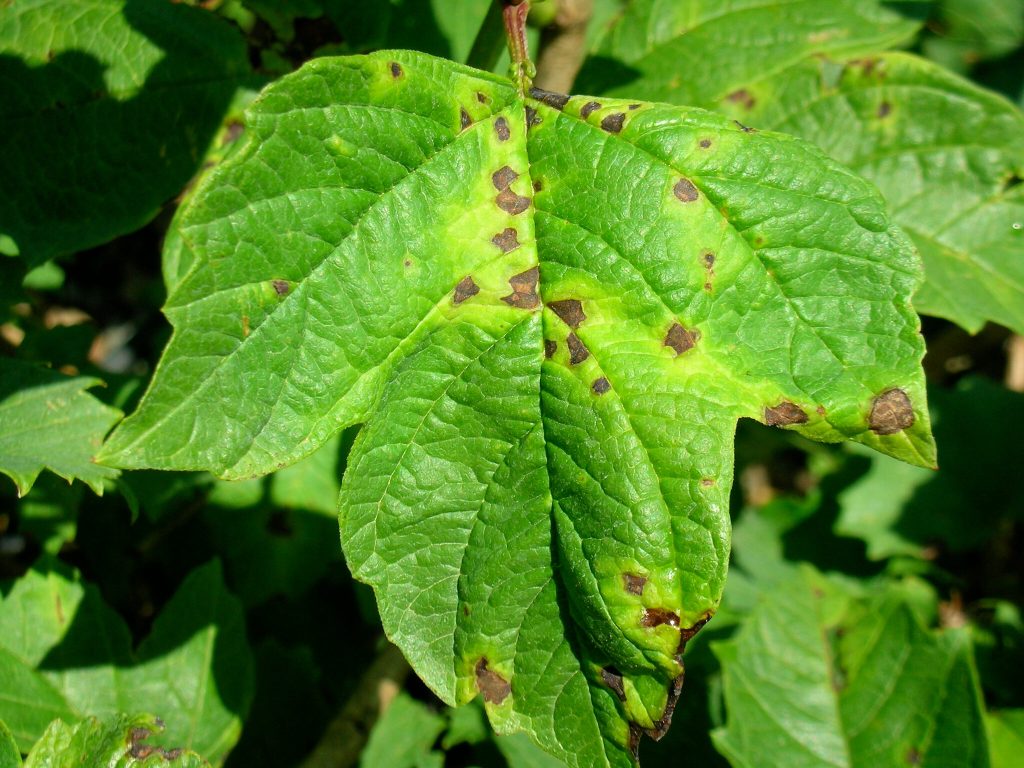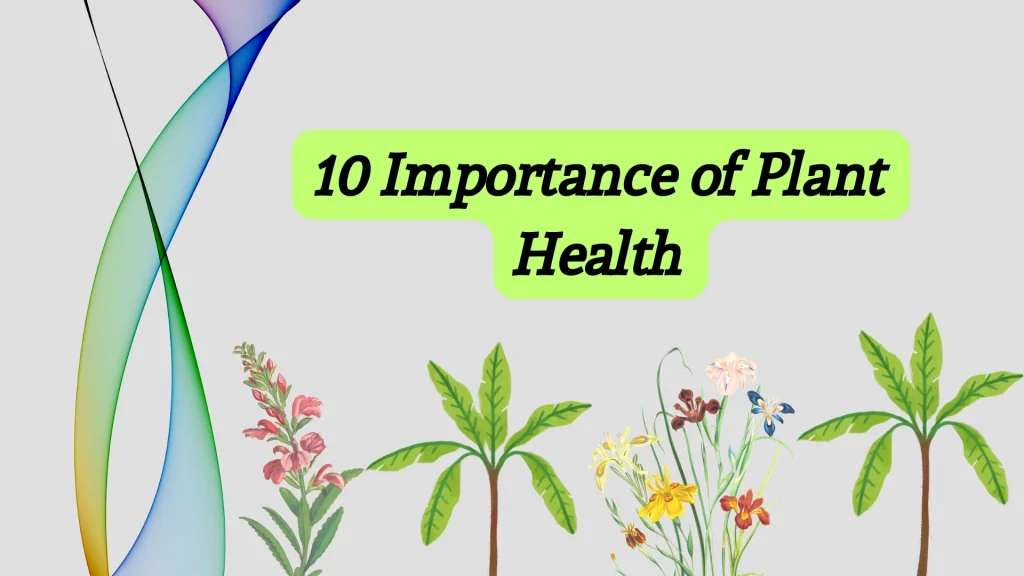I make my plants healthy by 10 tips
10 Importance of Plant Health
Plant health is crucial for several reasons, both environmental and economic:
Environmental Balance: Plants play a vital role in maintaining ecological balance by producing oxygen, absorbing carbon dioxide, and providing habitats for various organisms.
Food Security: Healthy plants are essential for agriculture, providing food for humans and livestock. They contribute to global food security and nutrition.
Ecosystem Services: Plants provide ecosystem services such as soil stabilization, water purification, and climate regulation, which are crucial for sustaining life on Earth.
Biodiversity: Healthy plants support biodiversity by providing habitats and food for a diverse range of animals and microorganisms.
Economic Importance: Agriculture, forestry, horticulture, and landscaping industries depend on healthy plants for their livelihoods and economic activities.
Human Health: Many plants have medicinal properties and contribute to traditional medicine practices worldwide.
Aesthetic Value: Plants enhance the beauty of landscapes, gardens, and urban environments, contributing to quality of life and well-being.
Maintaining plant health involves practices like proper watering, pest management, disease control, and promoting soil fertility. This ensures sustainable agriculture, preserves biodiversity, and supports ecosystems worldwide.
Plant health app
Plant health apps are valuable tools for gardeners, farmers, and plant enthusiasts to monitor, diagnose, and improve plant health. These apps leverage technologies like AI, machine learning, and sensors to help users identify plant diseases, track growth, and offer care recommendations. Here are some common features and examples of popular plant health apps:
Key Features of Plant Health Apps:
Plant Disease Identification:
Users can upload photos of plants, and the app uses image recognition to identify diseases, pests, or nutrient deficiencies.
AI and ML algorithms often analyze plant symptoms (yellowing, spots, wilting, etc.) and recommend solutions.
Care and Maintenance Tips:
Provide personalized care advice based on the plant type, soil conditions, and climate.
Reminders for watering, fertilizing, pruning, and repotting.
Plant Database:
Access to extensive plant libraries with information about various species, including their growth requirements, pest resistance, and best care practices.
Weather Integration:
Real-time weather updates help users adjust watering schedules and anticipate environmental stressors like frost or extreme heat.
Soil and Nutrient Analysis:
Some apps integrate with sensors to analyze soil quality, pH levels, and nutrient availability, offering tailored fertilization advice.
Pest and Disease Monitoring:
Apps may have tools to track and monitor common pests and diseases in your area, alerting users to potential threats.
Growth Tracking:
Users can log plant progress over time, tracking height, number of leaves, flowering, and other indicators of plant health.
Community Features:
Many apps have built-in forums or communities where users can ask for advice, share experiences, and get tips from fellow plant enthusiasts or experts.
Sustainability Tips:
Provide recommendations on eco-friendly plant care, organic pest control, and water conservation practices.
Popular Plant Health Apps:
Plantix:
- Features: Specializes in diagnosing plant diseases and recommending treatments. It’s widely used by farmers for crop health monitoring.
- Notable Functions: AI-powered disease identification and real-time advice for crops like rice, wheat, and vegetables.
PlantSnap:
- Features: Focuses on plant identification and care. Users can take photos of plants to identify species and receive care advice.
- Notable Functions: Identification of over 600,000 plant species with a global plant database.
PictureThis:
- Features: Offers plant identification through photos and provides detailed information on plant health, care tips, and pest control.
- Notable Functions: AI-driven plant health analysis with a large database of plants and diseases.
Agrobase:
- Features: Primarily used for identifying crop pests, diseases, and weeds, with guides for treatment options.
- Notable Functions: Comprehensive database for farmers, offering pest and weed control solutions.
Planta:
- Features: Helps users care for indoor and outdoor plants, offering personalized watering schedules, light recommendations, and reminders.
- Notable Functions: Tracks plant health and offers recommendations for improving growth conditions.
Florish:
- Features: Focuses on plant care for home gardeners, giving advice on watering, lighting, and soil needs.
- Notable Functions: Integrates plant health tracking with growth and progress visualizations.
GrowIt!:
- Features: A social app where gardeners share their plants and experiences, helping each other with care and pest problems.
- Notable Functions: Allows users to document and track plant health over time.
SmartPlant:
- Features: Provides plant identification, care schedules, and expert advice for keeping plants healthy.
- Notable Functions: Monthly plant care advice and connection to local plant experts.
Advantages of Using Plant Health Apps:
Real-Time Support: Users can access immediate help, preventing plant diseases from worsening or spreading.
Data-Driven Decisions: Apps integrate environmental data and soil conditions to suggest optimal care practices.
Community and Expert Guidance: Users can connect with other plant lovers or experts to resolve issues they can’t figure out on their own.
Convenience: With regular reminders and tips, plant owners can ensure they stay on top of plant care tasks.
These apps are increasingly popular as they empower both novice and experienced plant caretakers to keep their plants thriving. The use of AI, sensors, and data analytics has revolutionized plant care, making it more accessible, precise, and environmentally friendly.
Plant Health products
Plant health products play a vital role in maintaining the vitality, productivity, and resistance of plants to pests and diseases. These products include a variety of inputs that farmers, gardeners, and landscapers use to ensure optimal growth and to protect plants from environmental stressors. Here are some key types of plant health products:
1. Fertilizers
Purpose: Provide essential nutrients to plants, promoting growth, flowering, and fruiting.
Types:
- Organic fertilizers: Compost, manure, bone meal, and fish emulsion.
- Inorganic fertilizers: Nitrogen (N), phosphorus (P), potassium (K) based formulations (e.g., NPK 10-10-10).
2. Pesticides
Purpose: Control or eliminate harmful insects, fungi, and other pests.
Types:
- Insecticides: Target insects like aphids, beetles, and caterpillars.
- Fungicides: Combat fungal diseases like powdery mildew and rust.
- Herbicides: Prevent or eliminate weeds that compete with crops for resources.
3. Plant Growth Regulators (PGRs)
Purpose: Influence plant growth patterns, such as flowering, fruiting, or rooting.
Examples: Cytokinins (promote cell division), auxins (stimulate rooting), and gibberellins (control stem elongation).
4. Biostimulants
Purpose: Enhance the plant’s natural processes to increase nutrient uptake, improve tolerance to stress (drought, heat), and boost overall vitality.
Types:
- Humic and fulvic acids: Improve soil structure and nutrient availability.
- Seaweed extracts: Stimulate growth and resilience.
- Beneficial microbes: Promote root health and nutrient absorption.
5. Bio-pesticides
Purpose: Use natural organisms or substances derived from them to control pests.
Examples:
Bacillus thuringiensis (Bt): Effective against caterpillars and other insects.
Neem oil: A natural insecticide and fungicide.
6. Soil Conditioners
Purpose: Improve the physical properties of the soil to enhance plant growth.
Types:
- Gypsum: Helps break up compacted soil and improve drainage.
- Peat moss and compost: Improve soil structure, water retention, and aeration.
7. Plant Immunity Boosters
Purpose: Strengthen the plant’s immune system to fight off diseases and environmental stressors.
Examples: Silicon-based supplements, chitosan, and other natural extracts that enhance disease resistance.
8. Hydroponic and Aquaponic Nutrients
Purpose: Provide plants with a balanced nutrient solution in water-based growing systems.
Types:
- Liquid or powdered formulations containing essential macro and micronutrients (N, P, K, calcium, magnesium, and trace elements).
9. Seed Treatments
Purpose: Protect seeds from diseases and pests during the germination stage and promote vigorous growth.
Examples: Fungicidal and insecticidal coatings, as well as microbial inoculants for improved germination.
10. Anti-Transpirants
Purpose: Reduce water loss through transpiration, helping plants survive in drought conditions.
Types:
- Coatings like waxes, polymers, or natural oils that reduce water evaporation from plant leaves.
11. Organic Remedies
Purpose: Provide eco-friendly alternatives to chemical-based products.
Examples:
Companion planting: Growing plants that naturally repel pests.
Diatomaceous earth: A natural powder used to control insects.
These products, whether organic or synthetic, are essential for maintaining plant health in agriculture, horticulture, and home gardening. The choice of product depends on the type of plant, environmental conditions, and the specific health issues being addressed.
Plant Diseases in 2024
In 2024, plant diseases continue to be a major concern for global agriculture and food security. Various factors such as climate change, evolving pathogens, and increased trade have contributed to the spread of plant diseases. Below are some of the most significant plant diseases and trends in plant health for 2024:
1. Wheat Rust (Stem Rust and Leaf Rust)
Description: Wheat rusts, including stem rust (caused by Puccinia graminis) and leaf rust (caused by Puccinia triticina), remain a global threat. These fungal pathogens cause significant yield losses.
Current Issues: New virulent strains, like Ug99, continue to spread, with concerns about their ability to overcome resistant wheat varieties. Global collaboration is ongoing to develop resistant strains of wheat.
Prevention: Breeding for resistant varieties and applying fungicides are the primary methods of control, but research is increasingly focused on durable, long-term solutions.
2. Banana Fusarium Wilt (TR4)
Description: Fusarium wilt, also known as Panama disease, caused by Fusarium oxysporum f. sp. cubense Tropical Race 4 (TR4), threatens global banana production, especially the Cavendish variety.
Current Issues: This soil-borne fungus has spread to various regions, including Asia, Africa, and Latin America. Since bananas are a staple food in many countries, this disease is a significant economic and food security issue.
Prevention: There are no effective chemical treatments for TR4. Efforts focus on containment, quarantine measures, and the development of disease-resistant banana varieties.
3. Citrus Greening (Huanglongbing – HLB)
Description: Caused by the bacterium Candidatus Liberibacter, citrus greening is spread by the Asian citrus psyllid (Diaphorina citri). It results in unmarketable fruit and eventual tree death.
Current Issues: HLB continues to devastate citrus industries, especially in the U.S. (Florida and California), Brazil, and other citrus-producing regions. In 2024, research focuses on genetic solutions, biocontrol methods, and resistant rootstocks.
Prevention: Vector control using insecticides and the removal of infected trees remain key strategies. Genetic modification (GM) research is promising but not yet widely implemented.
4. Rice Blast
Description: Rice blast, caused by the fungus Magnaporthe oryzae, is one of the most destructive rice diseases worldwide, affecting both yield and quality.
Current Issues: With rice being a staple food for billions, rice blast poses a significant threat to food security, particularly in Asia. Climate change is exacerbating the situation, as warmer temperatures and humidity promote the spread of the disease.
Prevention: Farmers use resistant varieties, fungicides, and field management practices to combat rice blast. Advanced research includes biotechnological approaches to develop more durable resistance.
5. Coffee Leaf Rust
Description: Coffee leaf rust, caused by the fungus Hemileia vastatrix, affects coffee trees, reducing yields significantly.
Current Issues: Countries in Central and South America, as well as parts of Africa, are struggling with outbreaks, which are worsened by changing climate conditions. The disease threatens the livelihoods of coffee farmers worldwide.
Prevention: Developing rust-resistant coffee varieties and implementing agroforestry practices are primary methods. Fungicide use is common, but there is a push for more sustainable approaches.
6. Potato Late Blight
Description: Caused by Phytophthora infestans, potato late blight is the same disease responsible for the Irish Potato Famine. It continues to be a major concern for potato farmers globally.
Current Issues: Late blight outbreaks have become more frequent due to climate change, with increased rainfall and humidity favoring the spread of the disease. Infected crops can be wiped out rapidly if not treated in time.
Prevention: Resistant varieties, fungicides, and proper crop rotation are critical management strategies.
7. Soybean Cyst Nematode
Description: This soil-borne nematode (Heterodera glycines) is a significant pest of soybean crops, leading to reduced yields.
Current Issues: With soybeans being a key crop in many regions, especially the Americas and Asia, this disease is causing economic damage. Research in 2024 is focusing on better diagnostic tools and resistant varieties.
Prevention: Rotating crops and using resistant soybean varieties help manage the spread of the nematode.
8. Xylella fastidiosa
Description: This bacterium causes a variety of plant diseases, including olive quick decline syndrome and Pierce’s disease in grapevines. It is spread by insect vectors such as sharpshooters.
Current Issues: In 2024, the focus remains on controlling the spread of Xylella in Europe, particularly in Italy’s olive groves, where it has devastated production. Grapevine and almond crops in the U.S. are also at risk.
Prevention: Controlling insect vectors, removing infected plants, and ongoing research into resistant varieties are the main control methods.
9. Emerging Threats
Climate Change Impact: Changing weather patterns, including increased temperatures and erratic rainfall, are creating favorable conditions for the spread of many plant diseases. Pathogens can move into new regions where they previously did not thrive.
Increased Global Trade: Globalization and increased trade have heightened the risk of pathogens being introduced to new areas. Quarantine measures and monitoring systems are being enhanced in 2024 to reduce this risk.
10. Innovations in Plant Disease Control
Gene Editing (CRISPR): New advancements in gene editing are being used to create crops with built-in resistance to diseases. This technology holds promise for creating more resilient plants that can withstand pathogens.
Biological Control Agents: In 2024, the use of beneficial microbes and biological control agents is expanding, offering a more sustainable approach to managing plant diseases without heavy reliance on chemicals.
AI and Machine Learning: These technologies are being used to predict disease outbreaks and optimize treatment schedules, improving the efficiency of disease management.
CONCLUSION:
Plant diseases remain a pressing issue in 2024, with emerging pathogens, climate change, and global trade exacerbating the challenges. However, ongoing research into resistant crop varieties, biological controls, and advanced diagnostic tools provides hope for better management and mitigation of these diseases in the coming years.
FAQ:
How do you check the health of a plant?
What is the best app to diagnose sick plants?
Regarding apps for diagnosing sick plants, here are a few popular ones:
PlantSnap: Helps identify plants and diseases through photo recognition.
Garden Compass: Offers plant identification, pest, and disease diagnosis.
SmartPlant: Provides care advice and can help diagnose plant problems.
How can I make my plants healthy?
To make your plants healthy:
Proper Watering: Ensure they receive adequate water without overwatering.
Light: Place them in appropriate light conditions according to their species’ needs.
Nutrition: Use fertilizers suitable for the plant type and feed them as needed.
Pruning: Remove dead or diseased parts regularly to promote growth.
Environment: Ensure good air circulation and humidity levels.
Is there a device to check plant health?
Regarding devices to check plant health, there are various tools:
Moisture Meters: Measure soil moisture to prevent overwatering or underwatering.
Light Meters: Gauge light levels to ensure plants get adequate light.
pH Meters: Check soil acidity to ensure optimal conditions for plant growth.
These tools can help you monitor and maintain your plants’ health effectively.



very informative articles or reviews at this time.
Normally I do not read article on blogs however I would like to say that this writeup very forced me to try and do so Your writing style has been amazed me Thanks quite great post
FinTechZoomUs There is definately a lot to find out about this subject. I like all the points you made
Isla Moon I like the efforts you have put in this, regards for all the great content.